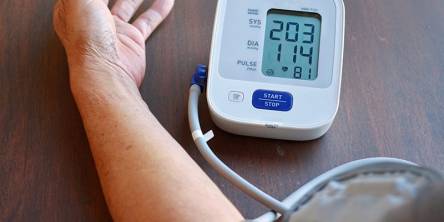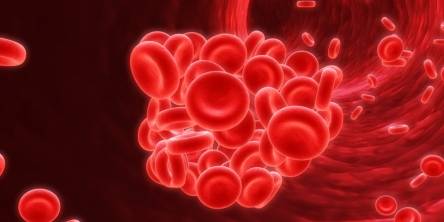What Teas Are Good for the Heart?

Black, green, white or red teas come from the same plant Camellia Sinensis. The difference lies in the processing method:
Green tea is made from the buds and top two leaves of a shrub, which are then quickly steamed to prevent fermentation, which stops any enzyme activity that causes oxidation. In fact, green tea undergoes the least amount of processing.
White tea is made entirely from leaf buds that are covered with fine white hairs, which are then withered at very low temperatures. Unlike other tea processing methods, the leaf buds aren’t rolled and only slightly oxidized.
Black tea is made from older leaves, which are then partially dried, crushed and finally fermented. It is the only tea to be fully oxidized and fermented, receiving the most processing of all the teas.
Red (oolong) tea is also made from older leaves and stems, which are dried and rolled at high temperatures. It is partially fermented.
Regardless of the processing method, all these types of teas contain flavonoids, which explain why tea drinkers are less likely to have heart disease. The tea compounds known as flavonoids, such as catechins and epicatechins, are responsible for tea’s beneficial effects and give it its antioxidant properties. In fact, white tea contains the highest levels of antioxidants, followed by green, red and lastly black tea.
Here’s what studies reveal about tea benefits for the heart and how it can reduce the risk of heart disease:
Green tea contains the highest amount of flavonoids, specifically catechins that are most studied and most bioactive for the heart benefits. It helps dilate arteries, allowing vessels to relax and blood to flow freely. Green tea flavonoids, particularly epigallocatechin-3-gallate, help prevent inflammation of the heart tissue and formation of clots. This can help prevent atherosclerosis. Moreover, the green tea ability to inhibit inflammation, modulate oxidative stress and target tissue fibrosis may help prevent the onset or recurrence of atrial fibrillation.
Black tea contains not as many polyphenols as its green counterpart, but the oxidation process produces a set of unique compounds that have their own heart health benefits. For example, black tea contains theaflavins and thearubigins that lower LDL cholesterol in blood. Moreover, it significantly improves endothelial function, HDL cholesterol and blood antioxidant levels, which can protect against inflammation and oxidative stress. White tea contains the most antioxidants compared to other tea types and has none of the tannins detected in black tea and less caffeine than other teas. The catechins it contains improve the functioning of blood vessels and increase oxidative stress in cells. Consuming white tea daily may help reverse the oxidative damage done to the heart cells and prevent plaque formation.
White tea consumption is also associated with a lower incidence of coronary artery disease.
Red tea combines the qualities of green and black tea leaves, giving it additional health benefits. It contains theobromine and theophylline which are similar to caffeine, as well as the amino acid theanine responsible for its relaxing effect. While caffeine works to stimulate the central nervous system, heart, and muscle, red tea may promote high blood pressure in some people. Though, this effect tends to fade with regular red tea consumption.
Herbal teas are not really teas as they don’t come from Camellia Sinensis plant, but come from stems, leaves, flowers, fruits, seeds and roots of other plants. Although they have lower concentrations of antioxidants, they still may be a helpful option, especially for those who don’t like drinking traditional teas. Thus, a common ingredient in many tea blends Hibiscus is caffeine free and may help people with hypertension, due to its vessels-dilating effects. The antioxidant chrysoeriol in rooibos tea can inhibit migration of smooth muscle cells inside the aorta, thus reducing narrowing and hardening of arteries. However, little research has been done to support health benefits of these teas.
Similar Articles
So you’re halfway up the stairs, just a few more steps to go, and suddenly, you feel like you’ve just run a marathon. Your heart’s racing, your lungs are working overtime, and you’re left wondering if you’re that out of shape—or if there’s something more sinister going on. Don’t worry, you’re not alone
Heart disease claims the lives of 9 million people every year. There are lots of small habits and lifestyle choices that can have a negative impact on the health of our hearts, especially when they are amplified over the course of a lifetime
It can be difficult to know when you have high blood pressure because the symptoms and signs are not always obvious. If left unchecked, however, it can gradually damage your blood vessels, heart, kidneys, and other vital body organs. Blood pressure fluctuations can also be dangerous.
A reliable AED plays a vital role in increasing the survival rate of SCA. This post lists 8 reasons to tell why we need a reliable AED device and something you need to know about the AED.
Normal heart rate in people is 60-100 beats per minute. But if the heart rate is lower than 60 beats per minute, that may indicate bradycardia development. If the pulse is constantly 30-40 beats per minute and it doesn’t increase even during physical activity, it’s a quite dangerous condition.
In recent decades, Western medicine has shifted its main focus quite dramatically, from infectious diseases towards cancer and chronic conditions, such as heart, stomach and liver issues.
According to statistics, people suffering from diabetes are 1.5 times more likely to develop a stroke than those who don’t have this disease. So why does it happen? The connection between these two conditions lies in the way the body transforms glucose into energy.
Blood clotting is a necessary process that in certain instances prevent the body from losing too much blood. When you get a paper cut or a minor injury, a blood clot stops the bleeding and falls apart.








